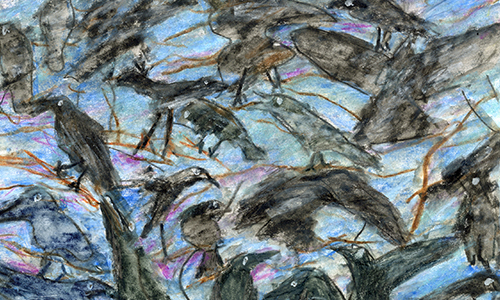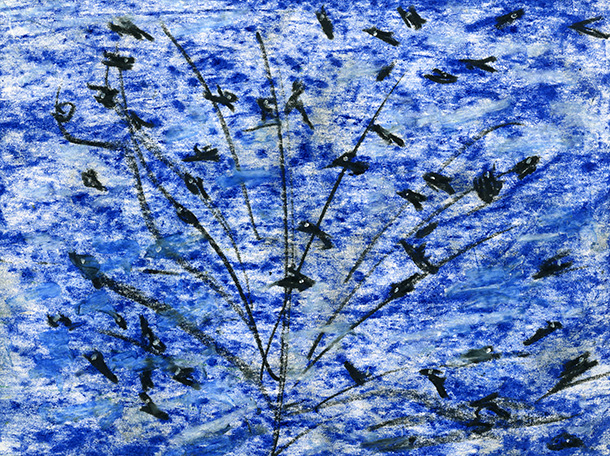
MOVED BY THE DRAMATIC SIGHT OF MANY BIRDS, THE ARTIST CAPTURED AN ATMOSPHERE IN HIS PAINTINGS
by Steven Hirsch
For many years, I’ve worked as a photographer for New York’s tabloid newspapers, snapping candid shots of people in the streets and, in particular, capturing the faces and antics of accused and confirmed crooks and misfits at the criminal-court buildings in downtown Manhattan.

I’ve photographed small-time thieves and big-time gangsters. I remember the case of Robert Chambers, who became notorious in the mid-1980s as the “Preppy Killer” and the “Central Park Strangler” after strangling a young woman to death during a sexual tryst in Central Park. After having served the entirety of a long sentence, on February 14, 2003, Chambers was released from Auburn Correctional Facility, a prison located in the small town of Auburn in upstate New York. This maximum-security, state-run facility was the site of the first execution by electric chair back in 1890.

With its massive walls and imposing guard towers, this large prison building looks ominous. Back on that winter day in early 2003, I remember standing outside the prison’s front door, waiting for Chambers to be released so that I could snap some photos; I was there on assignment for a New York newspaper. It was a very cold day, with a temperature of just eleven degrees Fahrenheit, and it was snowing. It was a day that seemed to be filled with foreboding. (Indeed, years later, Chambers would be sent to jail again for drug-related crimes.)
I remember, too, that the sky was bright gray, and that as I looked up, something black and massive began filling its steely void.

I asked a prison guard waiting outside what the unusual sight was, and he replied that it was a huge flock of crows — thousands and thousands of crows. The guard explained that, at night, those big birds routinely landed on and filled the branches of every tree in the town and of every tree for miles around.
That night, I made my way to downtown Auburn, where I photographed trees filled with crows. It was dark, so I had to use a flash. In the photos I shot, you can clearly see how the eyes of the mysterious, black birds huddled in the trees caught the reflections of my camera’s quick bursts of light. The roar of their mass chorus of non-stop crowing was deafening.
I’ll never forget that evening. Years later, on a cold, wintry day, that scene came creeping back into my memory. So I drew it. For me, it’s indelibly associated with the headline-making day of Chambers’ release from jail and with the small town of Auburn and its famous, notorious, maybe even dubious landmark — that maximum-security prison and all that it represents.



